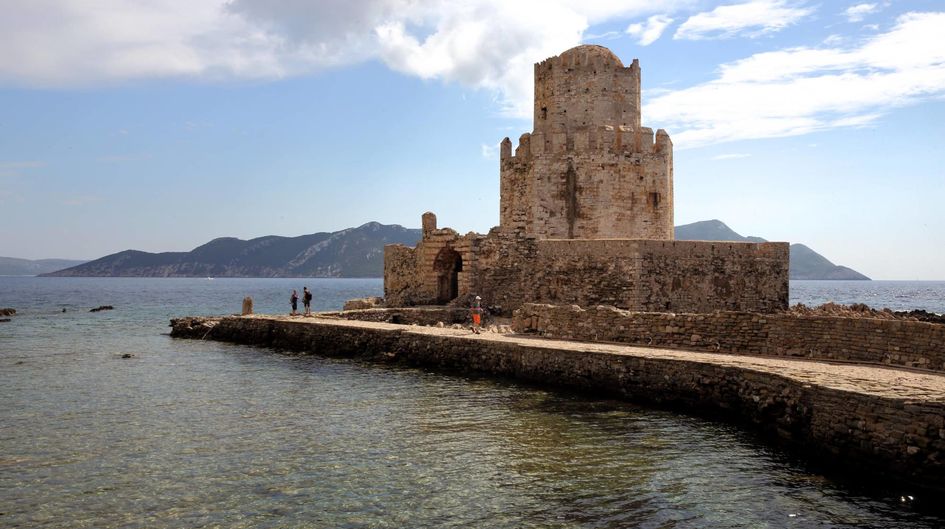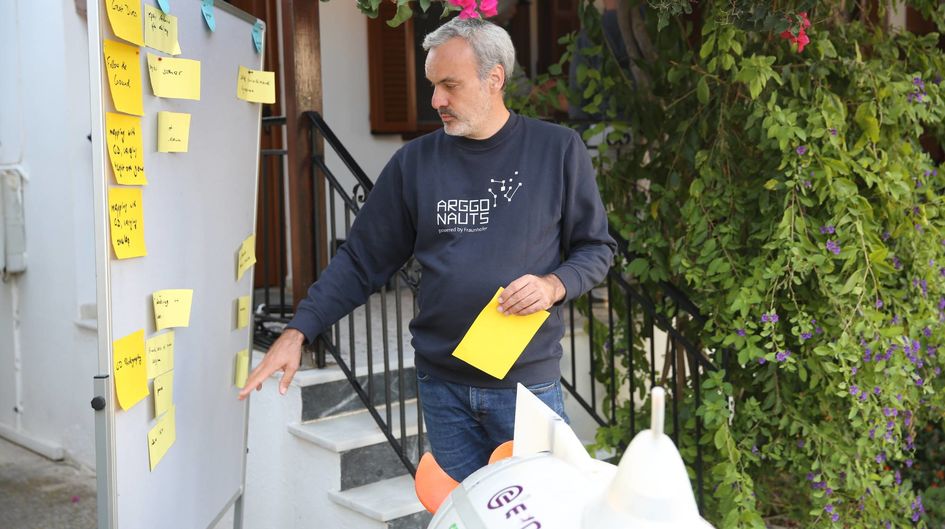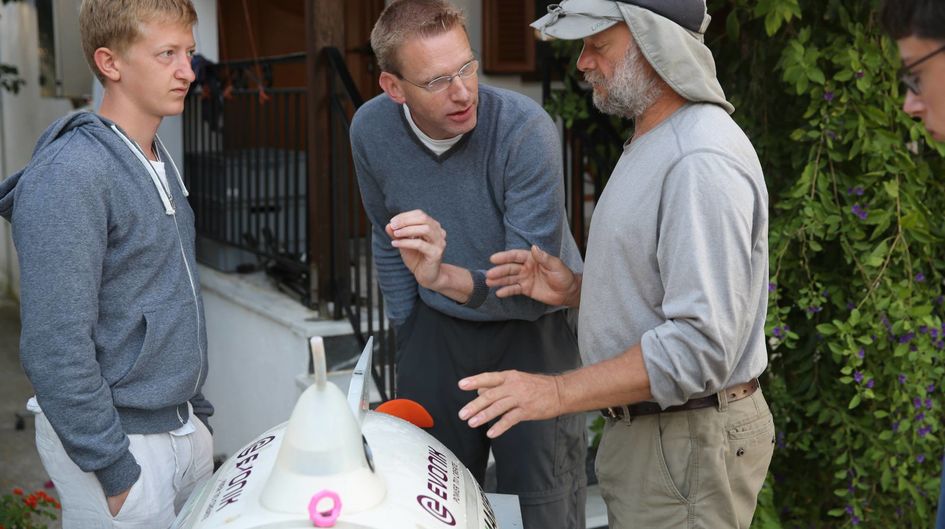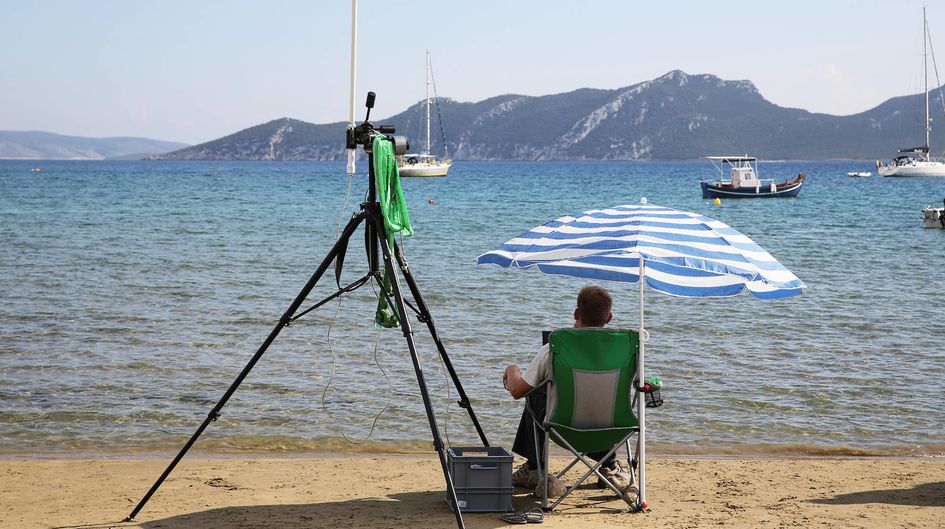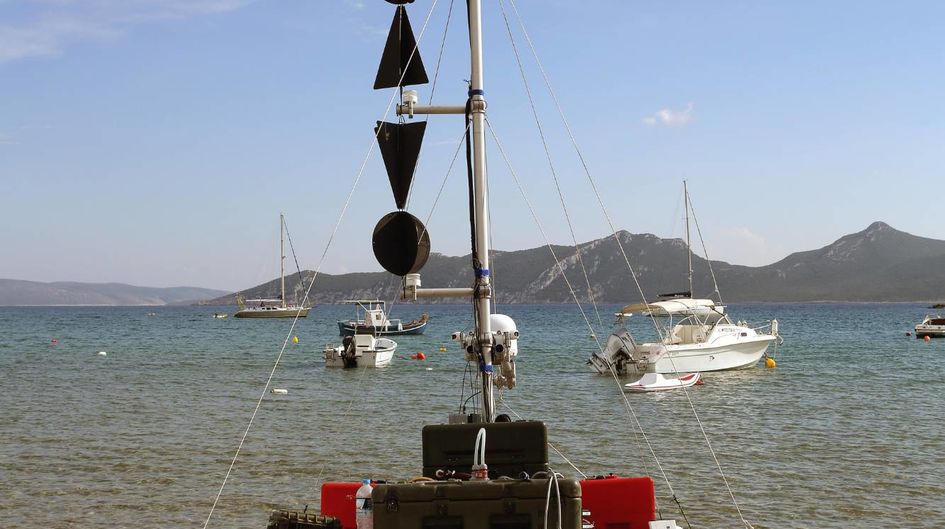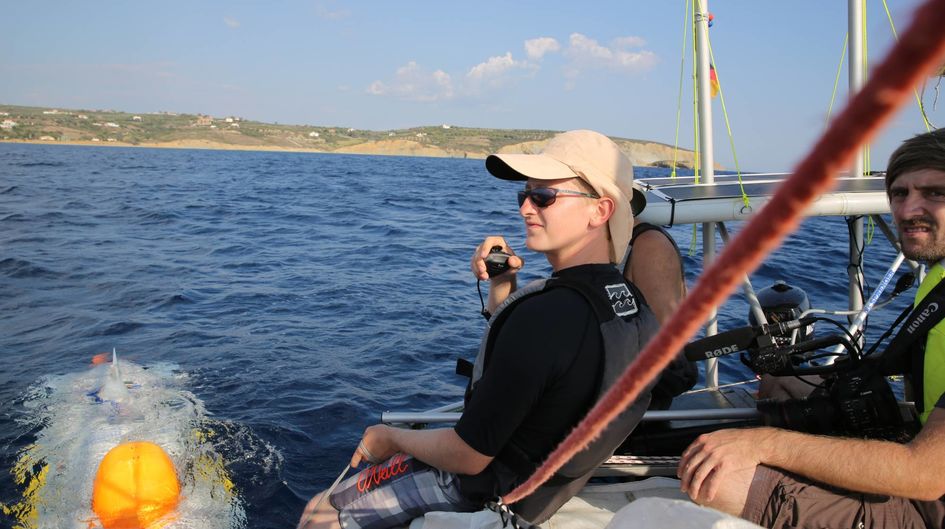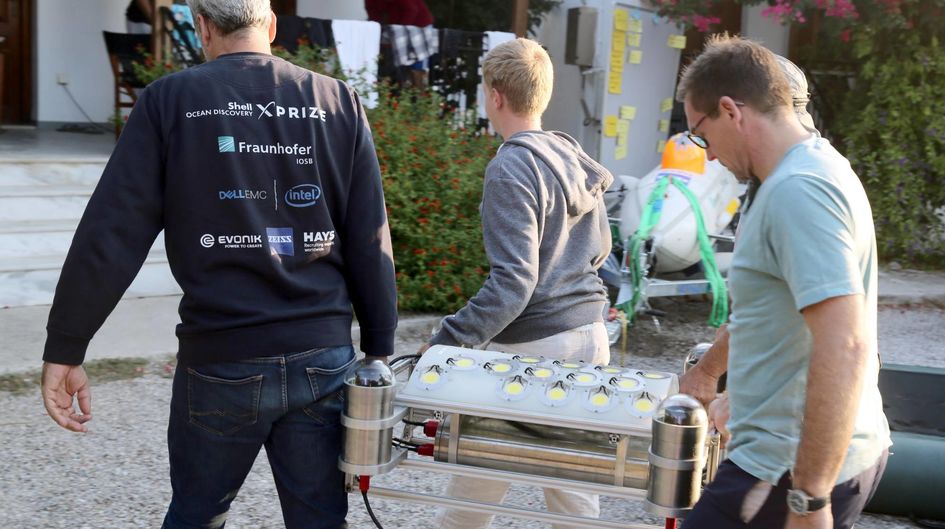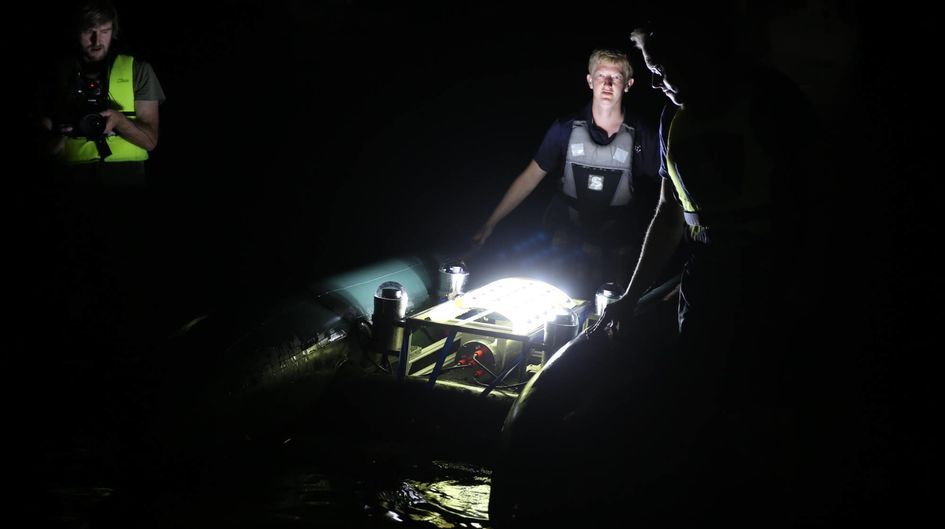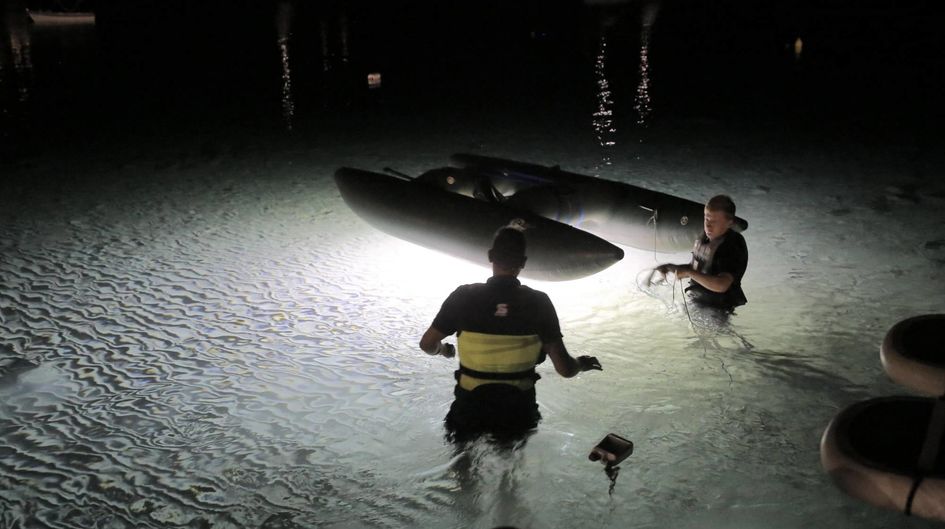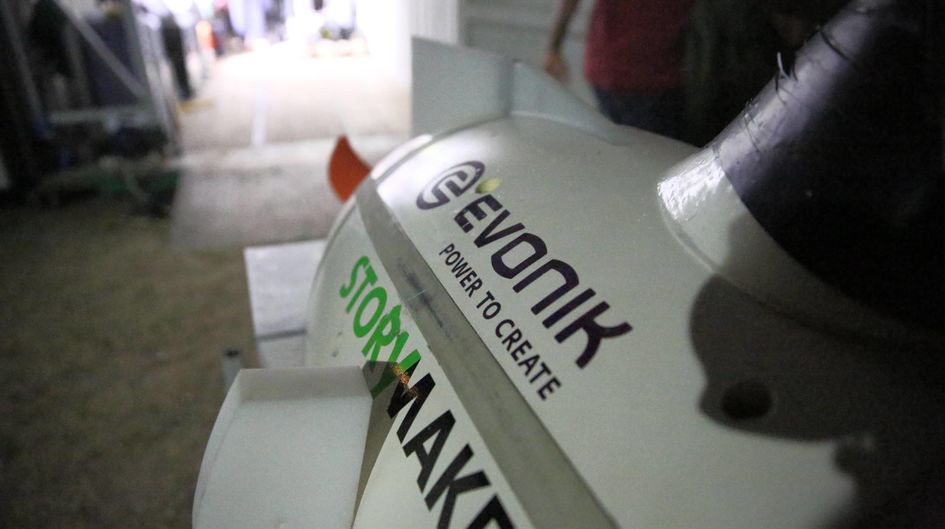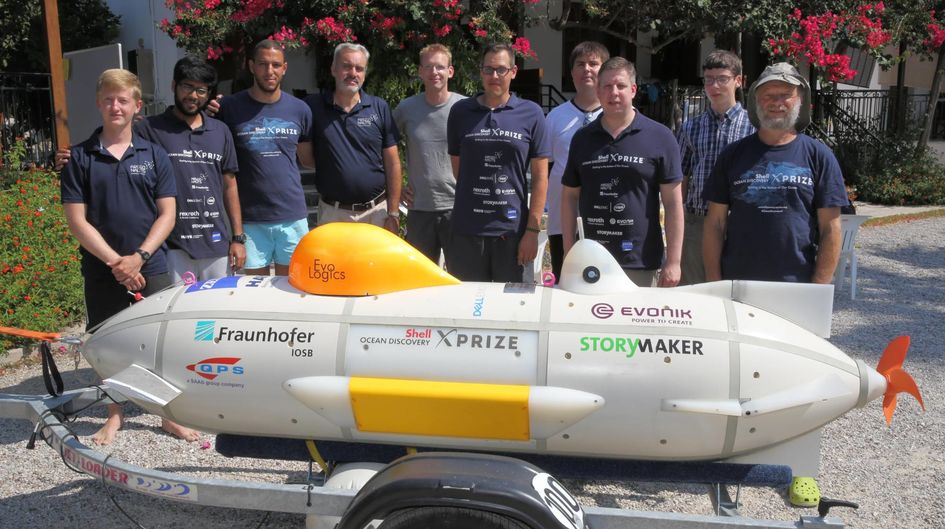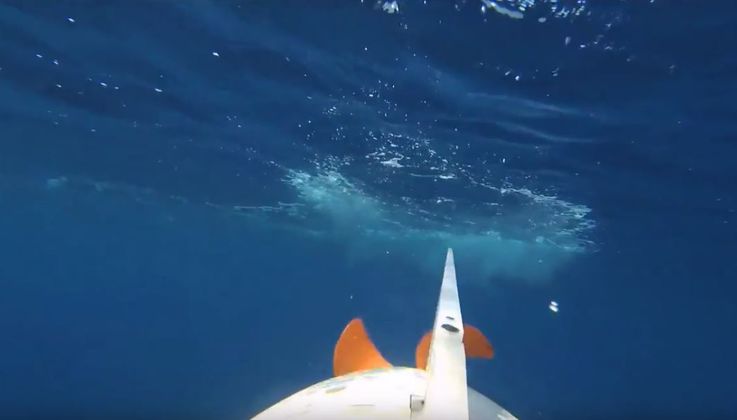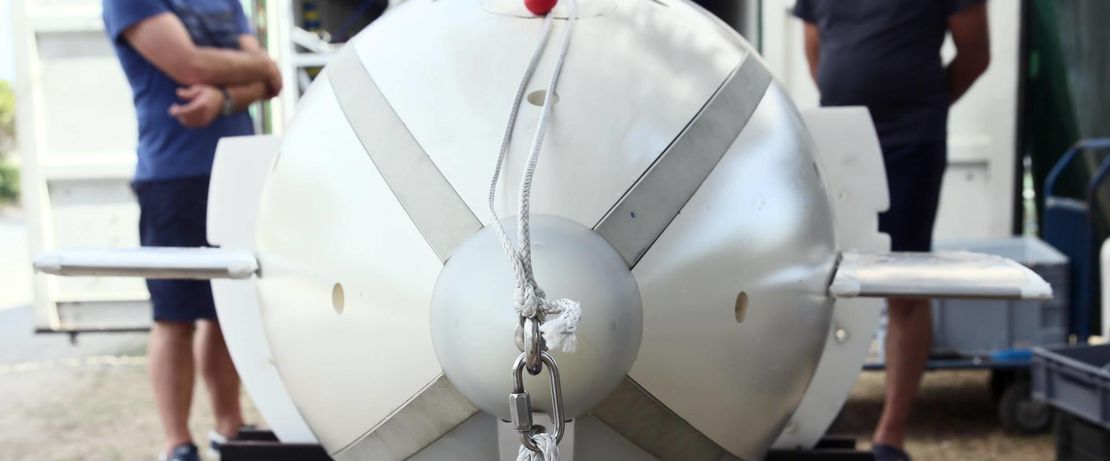
High-performance materials for the ocean’s depths
Evonik supports the “Arggonauts” of the Fraunhofer Institute of Optronics, System Technologies, and Image Exploitation. Representing a colorful blend of disciplines, this international team is participating in the XPRIZE Ocean Discovery competition. Their aim is to map the ocean floor using drones operating autonomously both above and below water. The Fraunhofer team is focusing on lightweight construction materials and high-performance polymers.
Sponsored by the XPRIZE Foundation and offering a prize of US$ 7 million, the Ocean Discovery competition aims to make charting the ocean floor faster and more precise. Today we have done a better job of mapping the moon—and even a few other planets—than we have of surveying the depths of our oceans, which comprise nearly two-thirds of the Earth’s surface. While manned submarines deliver fascinating photos from the deep sea, they are slow and are limited in how deep they can dive. Unmanned underwater vehicles connected by control cables need support vessels, which makes them sluggish and expensive. Now, however, the use of artificial intelligence, ingenious navigational technologies, and ultramodern materials is expected to allow robots to do the surveying work rather than humans. But there is a caveat: the technology does not yet exist.
Eight teams from a starting pool of 30 are still in the competition, which began in 2016. Fraunhofer IOSB from Karlsruhe, a team specializing in recording and analyzing large volumes of shapes and images quickly, is among the favorites. The Institute had already gained experience with deep-sea applications when it discovered a historical airplane at a depth of 6,000 meters. What’s new in this case is that the area to be charted is relatively large, and the devices have to start from the shore and return on their own. Teams have 24 hours to create a map of the ocean floor down to a depth of 4,000 meters and covering some 250 square kilometers. They will also have to take photos of multiple predetermined objects in the lightless depths. To accomplish this, Fraunhofer will employ five surface vessels and five submersibles, which will solve the problem together using swarm technology. The final round begins in late November and lasts until February. Each team has a window of 14 days.
A well-chosen test area
The Arggonauts team proved to have a sixth sense for choosing a test area—off the coast of Methoni in the Peloponnese region of Greece. XPRIZE later revealed that the final run would be held just a few kilometers north of there in the Calypso Deep, the deepest point in Europe. Locations over 4,000 meters deep are rare near coasts, however, which prompted Gunnar Brink, who heads up the Fraunhofer IOSB project, to think one step ahead. If the drones for the competition could be transported in a sea container, they would have to be much smaller and weigh much less for later scientific or commercial applications. Otherwise large-scale technology would be needed for deploying and recovering them on the high seas. “The underwater drones would theoretically have to be portable, and the surface vessels would have to be both lightweight and waterproof,” observes Brink, who has already taken steps toward establishing the project as a startup.
Evonik materials meet the toughest demands
Fraunhofer is already using Evonik materials that are expected to withstand 400 bars of water pressure and temperatures around the freezing point. During later stages of development, lightweight construction materials and high-performance polymers from Evonik will play an even greater role. Each of the five Great Divers, as the underwater drones are called, currently weigh nearly 300 kilograms, offering a great deal of latitude for Evonik materials in the portable version. For the Water Striders, i.e., the surface vessels, Brink is planning to use polyurethane foams that will accommodate the entire electronics system, protecting it from the raw ocean and wind while also acting as a flotation device. Developing the perfect structure for these foams is another area where Evonik has the necessary expertise. Electronic components are to be protected by an epoxy resin, which, thanks to additives from Evonik, can be molded into a bubble-free, pressure-resistant form.
The winners are to be announced in March. The Fraunhofer IOSB team is hoping to win, even though the competition is fierce, especially from Japan and the US. Although they are the only German team participating, the Karlsruhe researchers hope to bring the XPRIZE back to Germany—the first to do so since the competition began in 1996.
